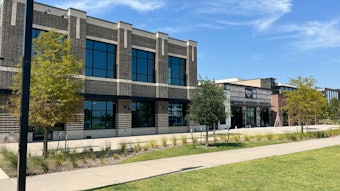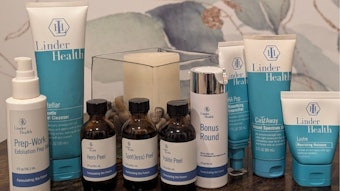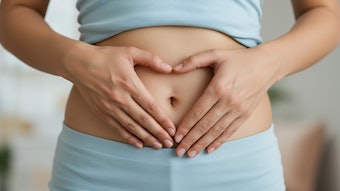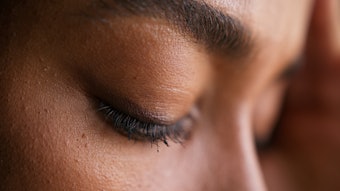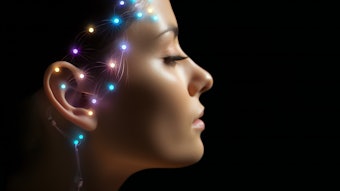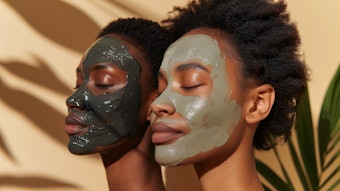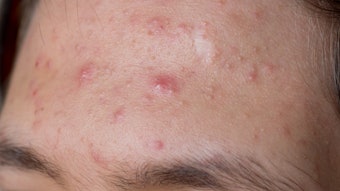
Editor's note: This article explores the evolving world of hair conditioning and repair, including prevalent bonding claims. It examines what these terms mean, the types of damage being addressed, tests to substantiate these claims and how consumers perceive them.
Hair damage refers to the progressive weakening and degradation of the fiber's structure — manifesting visibly and tactilely as dullness, roughness, frizz, split ends and breakage. Damage can occur at the molecular, microscopic or macroscopic levels, stemming from mechanical, chemical, thermal or environmental insults. For readers seeking foundational knowledge of hair structure and terminology, Practical Modern Hair Science by Evans and Wickett offers essential context.5
This range of consumer understanding highlights the growing sophistication of beauty users, shaped by product marketing, scientific communication and self-directed research. As Thomas summarizes, “Conditioned hair has reduced friction, making it more manageable, less tangle-prone and damage-resistant. Repair products restore the fiber structure and properties that have changed with damage.”8
Log in to view the full article
Editor's note: This article explores the evolving world of hair conditioning and repair, including prevalent bonding claims. It examines what these terms mean, the types of damage being addressed, tests to substantiate these claims and how consumers perceive them.
Like many other consumers, I’ve been using hair conditioner for as long as I can remember. But everything changed in my thirties, when I began regularly using permanent hair dye to cover my salt-and-pepper strands. My once-smooth hair became rough and unmanageable, and its texture developed a strange wave. I began searching for salon brand deep conditioners — often at a premium — in hopes of recapturing the silky, supple feel of my youth.
Around 2008, I noticed a shift: products with repair claims started appearing, promising more than just smoothing. That was right around the time I began my tenure at the Good Housekeeping Beauty Lab. Back then, serums that claimed to mend split ends began popping up on shelves, and we decided to put them to the test. We selected six of these products and evaluated them against the smoothing gold standard at the time: a silicone-based serum by John Frieda.
Using human hair swatches with visible split ends, we clarified and air-dried the strands, applied the products in standardized amounts, then rinsed and dried them according to protocol to simulate typical use. Using a digital microscopea, we confirmed that none of the serums permanently mended or “glued” the split ends. The smoothing effects were temporary at best, and none outperformed the silicone serum. Our recommendation at the time? Skip these products and get a trim.1
Now, more than 15 years later, the landscape has evolved dramatically. Repair claims have become more advanced, fueled by developments in materials science. The conversation has shifted from merely taming frizz to disulfide bond repair, peptide-powered restoration and products claiming to revive hair from the inside out.
In this installment of Testing Tactics, we explore the evolving world of hair conditioning and repair — and the increasingly prevalent bonding claims. What do these terms actually mean? What types of damage are being addressed? Which tests substantiate these claims — and how do consumers perceive them? Drawing on expert interviews, published literature and new consumer data, we examine the current science and look toward what’s next.
Healthy Hair Appearance
Healthy hair is widely recognized by its shine, smooth texture, fullness and clean-cut ends — traits consumers associate with hair that looks and feels its best, as noted by Sinclair.2 Shine and smoothness signal an intact cuticle, the outermost protective layer that reflects light and reduces inter-fiber friction. Beneath the cuticle, the cortex provides strength, elasticity and flexibility.
Structurally sound hair can stretch up to 30% when wet without sustaining damage; irreversible changes occur between 30-70% elongation, and breakage typically results above 80%.² Hair’s f-layer, a surface coating of fatty acids, helps to retain moisture and enhances hydrophobicity, further improving manageability and reducing friction.
In short, healthy hair maintains its integrity across molecular, microscopic and macroscopic levels. This layered strength underpins the resilience and aesthetic appeal that consumers and scientists alike define as healthy hair.
To understand how this aligns with consumer priorities, Ayton Global Research conducted a study in June 2025 with more than 200 women in the U.S. and UK, all regular users of conditioners, masks and/or leave-in and bonding treatments.3 When asked what they most look for in a hair conditioning or repair product, consumers’ top five responses were: shine (50%), frizz control (49%), smoothness (47%), moisture (41%) and strength (40%).³ These preferences closely mirror the scientific hallmarks of healthy hair.3
Salon professionals echo this alignment between technical and experiential definitions. “Healthy hair is shiny, bouncy, abundant and radiant,” says Vasken Demirjian, owner and color specialist at Vasken Salon.4 He highlights qualities like elasticity, suppleness and ease of styling: “It’s easy to brush, with a sealed cuticle layer that minimizes frizz and enhances color vibrancy.”4
How Hair Becomes Damaged
Hair damage refers to the progressive weakening and degradation of the fiber's structure — manifesting visibly and tactilely as dullness, roughness, frizz, split ends and breakage. Damage can occur at the molecular, microscopic or macroscopic levels, stemming from mechanical, chemical, thermal or environmental insults. For readers seeking foundational knowledge of hair structure and terminology, Practical Modern Hair Science by Evans and Wickett offers essential context.5
“All hair experiences some type of damage as it grows,” explains Roger McMullen, Ph.D., principal scientist at Ashland. “Hair accumulates a lifetime of damage from grooming (e.g., combing, brushing, thermal styling), chemical treatments (e.g., bleaching, relaxing) and environmental factors (e.g., UV exposure).” He notes that damage may affect both the external cuticle and the internal cortex of the fiber.6
Mechanical damage: Mechanical damage results from routine grooming — brushing, combing, towel-drying or shampooing — especially when hair is wet and structurally vulnerable. A seminal study by Robinson used SEM to show how wet abrasion removes cuticle edges, leading to jagged surfaces, split ends and fiber fibrillation.7 McMullen adds that “combing or brushing can stretch hair, especially damaging the crystalline phase of the cortex.”6
Chemical damage: Bleaching, dyeing and perming can strip away the protective fatty acid (18-MEA) f-layer from the cuticle, rendering hair more hydrophilic and susceptible to further damage.2 Chemical processing reduces disulfide cross-links, weakening the fiber.6 McMullen explains these processes damage proteins, lipids and melanin — often leading to their removal. For instance, “bleaching dissolves melanin, degrading internal pigment and altering surface properties,” he explains.6
Thermal damage: Thermal tools like flat irons and curling wands can exceed 180°C, denaturing proteins and compromising cuticle integrity. “Extreme heat melts the intricately woven cuticle structure that gives hair its strength and elasticity,” says Jeni Thomas, Ph.D., principal scientist, P&G Beauty.⁸ Quick, high-heat drying can also create vertical cracks in the cuticle, initiating a cascade of structural breakdown.8
Oxidative and environmental damage: Environmental aggressors including UV radiation, pollution and oxidative stress contribute to cumulative damage. Trüeb differentiates between internal oxidative stress (from metabolism, smoking or inflammation) and external stress (from UVR or chemical insults).⁹
UVB degrades proteins; UVA fades pigment.9 “Oxidative stress breaks down lipid molecules and protein strands, leading to porosity and microstructural separation,” adds Thomas. She notes that UV exposure is one of the most common and underrecognized causes of hair damage, advocating for antioxidant-based hair care to help counteract it.8
Salon professionals like Demirjian can recognize damaged hair at “first glance.” “It’s dull, lifeless, frizzy and over-processed,” says Demirjian. “It feels rough, lacks elasticity, soaks up water like a sponge and breaks easily during brushing.”4
Conditioning vs. Repair: What’s the Difference?
Technical perspective: While often used interchangeably in marketing, conditioning and repair have distinct meanings in hair care science. Conditioning aims to improve manageability, reduce friction and enhance the feel and appearance of hair — whether healthy or damaged.
“Hair conditioning follows shampoo cleansing to, at a minimum, reduce damaging friction thereby protecting hair in the vulnerable wet state, and to deliver moisturizing ingredients that ease detangling (which ultimately reduces breakage risk) and improve hair’s manageability,” added Thomas.8 Conditioning formulations may also target benefits such as frizz control, shine or curl definition.
“The term hair conditioning comes from the idea of keeping hair in a ‘proper and healthy state,’” add Paul Cornwell, Ph.D., and Ernesta Malinauskyte, Ph.D., of TRI Princeton. The primary goal, they explain, is to reduce the forces associated with combing or brushing, thereby limiting abrasion and cuticle damage.10
In contrast, hair repair seeks to restore properties and structures compromised by chemical, thermal, mechanical or environmental damage. “Repaired hair means restoring the fiber structure and properties that have changed with damage,” says Thomas. Repair products often contain actives designed to penetrate the hair shaft, strengthen the cortex, improve tensile strength and reduce porosity — while still providing surface conditioning.8
Cornwell and Malinauskyte emphasize a consumer-relevant distinction: “Repaired hair is damaged hair that consumers perceive to be restored toward undamaged hair. Various aspects of well-conditioned, damaged hair can be perceived and measured as significantly better than those of undamaged hair.” In other words, even average conditioners can noticeably improve the feel and performance of damaged hair.10
Consumer perspective: As previously mentioned, Ayton Global Research conducted a study surveying hundreds of women to gauge how consumers interpret the terms conditioning and repair.3 The responses reflected a wide range of understanding, from basic to more sophisticated interpretations. Following are select examples:
- I don’t believe there is any difference.
- They both just make hair soft.
- A conditioner makes hair softer and easier to comb; a repair product helps with heat damage and split ends.
- Conditioner smooths and detangles; repair fixes damage.
- Conditioner is for everyday use; repair products are weekly, more intensive treatments.
- Conditioner is a temporary fix; repair products go deeper and last longer.
- Conditioners coat the hair and help with manageability; repair products penetrate the hair shaft to rebuild structure.
- Repair products restore disulfide bonds and strengthen hair from the inside out; conditioners just soften the surface.
- Conditioner prevents damage; repair products reverse damage by fixing broken bonds.
This range of consumer understanding highlights the growing sophistication of beauty users, shaped by product marketing, scientific communication and self-directed research. As Thomas summarizes, “Conditioned hair has reduced friction, making it more manageable, less tangle-prone and damage-resistant. Repair products restore the fiber structure and properties that have changed with damage.”8
Tools of the Trade: How We Test Hair Care
When it comes to claims substantiation, various tests are used to assess product performance across diverse hair types and conditions. Following are recent examples.
Conditioning performance: According to Thomas, conditioners should be evaluated by how well they reduce friction, ease detangling and enhance manageability in the wet state. Relevant assessments therefore include friction reduction (combing tests), shine evaluations and sensory testing aligned with real-world use.8
For instance, Fernandes et al. studied novel biobased conditioning agents using combing force tests, SEM for cuticle alignment and film deposition, DSC for thermal properties, and IR spectroscopy for chemical analysis and 18-MEA layer restoration.11
Panchal et al. evaluated an herbal conditioner containing aloe vera, castor and grapeseed oils, flaxseed extract, a cetearyl olivate and sorbitan olivate blend, and cetyl alcohol. Sensory assessments were conducted post-shampoo to evaluate ease of combing, smoothness and feel.12
Fernández-Peña and Guzmán reviewed physicochemical drivers of conditioning, focusing on how ingredients interact with hair fibers. Cationic surfactants, fatty alcohols, silicones and polyquaternium compounds were highlighted. Key methods included combing force, friction, contact angle and AFM imaging — each linking instrumental performance to sensory attributes.13
Bobde et al. formulated 10 leave-in conditioners with hydrophobic film-formers (e.g., PDMS, fatty alcohols, glyceryl monooleate) and acrylates/C10-30 alkyl acrylate crosspolymer. Evaluations included firmness/stickiness (texture analyzer), viscosity (viscometer), contact angle (goniometer) and surface tension (tensiometer).14
Cornwell and Malinauskyte summarize conditioning efficacy evaluations as follows: “Surface-level conditioning can be measured instrumentally on tresses using combing tests and tress friction tests. Sensorial tests can also be conducted using naïve or expert panels, or half-head salon trials. Instruments like AFM can quantify cuticle friction and surface topography.”10
Standardizing substrate damage: When determining product efficacy, researchers must ensure that that hair substrates to which products are applied are reproducibly damaged. To this end, Di Foggia et al. created bleached hair using commercial hydrogen peroxide and persulfate in three 45-minute sessions plus one 15-minute session. Raman spectroscopy tracked cortex damage; ATR-FTIR assessed cuticle changes and disulfide bond cleavage.15
Martins et al. simulated salon bleaching in a two-step protocol. Substrates were analyzed via colorimetry, tensile testing, SEM and Raman spectroscopy to confirm uniform damage.16
In addition, Jiang et al. developed mildly damaged hair using hydrogen peroxide and ammonia, with alkali solubility between 5-15%. They evaluated a commercial hair oil for glossb and frictionc in both directions. Blinded sensory panels validated the instrumental findings.17
Repair and bonding performance: While this article does not aim to provide an exhaustive taxonomy of repair versus bonding, their overlap in claims warrants joint discussion here.
According to Cornwell and Malinauskyte, hair bonding refers to restoring some of the internal bonds within the hair.10 Previously, Cornwell and Marsh defined bond builders as “a formulation component that is able to penetrate into the hair and improve or restore the internal structure of hair, giving rise to an improvement in hair mechanical properties.”18
Hair repair, likewise, can occur via molecular bonding within the hair fibers.10 McMullen elaborates: “Hair repair can indicate any type of treatment that mechanistically helps repair damaged structures of the hair fiber. Hair bonding typically refers to smaller-sized molecular ingredients that can penetrate into the fiber and fortify the cortex of hair.”6
In relation, Qu et al. testedd 7 kDa low-molecular weight hyaluronate (LMW-HA) on bleached hair for tensile recovery, along with water retention and SEM imaging. LMW-HA improved moisture content, tensile strength and cuticle smoothness.19
Also, Di Foggia et al. assessed α,β-unsaturated Michael acceptors — including shikimic acid, dimethyl maleate and commercial products like Olaplexe — using ATR-FTIR, FT-Raman and SEM. While cuticle improvements were seen, disulfide bond content in the cortex remained unrepaired.20-23
Martins et al. employed SEM, AFM, colorimetry (CIELAB), ATR-FTIR, Raman spectroscopy, Ellman’s assay and tensile testing to evaluate the benchmark products Olaplexe and K18f. The water-based Olaplexe demonstrated deeper penetration and better disulfide bond restoration; the lipophilic K18f formed a surface layer that enhanced smoothness.16, 24
Won et al. evaluated a polyphenol complex shampoo with tannic, gallic and caffeic acids on bleached and heat-damaged hair. Using tensile testing, SEM, confocal microscopy, UV color stability and ROS-scavenging assays, the treatment demonstrated mechanical and antioxidant benefits.25
Reihani et al. tested a nanostructured lipid carrier (NLC) system embedding keratin peptides and oils. On bleached hair, SEM, contact angle and tensile testing confirmed the formation of a protective film that improved strength and reduced porosity.26
Camargo Jr. et al. (2022) used a tensile testerg , a laser scanning micrometer systemh, a polarized hair shine imaging devicej and SEM to study silk protein/polysaccharide treatments during bleaching and coloring. Results showed improved break stress, luster and cuticle condition even after repeated washing.27
Finally, Lourenço et al. examined oil penetration (coconut, avocado, argan) using Raman spectroscopy, and tensile and fatigue testing. Coconut oil penetrated deepest (30-50 µm), improved stiffness and enhanced break resistance in virgin hair. Argan oil increased moisture but reduced break strength in bleached hair.28
Can Hair Ever Truly Be Repaired?
While the idea of fully reversing hair damage is an enticing one, experts agree that it is exceptionally difficult to achieve, particularly once the structural integrity of the hair fiber has been significantly compromised. According to Cornwell and Malinauskyte, “full hair repair is difficult to achieve even with the best products or ingredients in the market and requires multiple product applications.” Only mild damage has been shown to be restorable to an undamaged hair level, and even then, only under highly controlled conditions and repeated treatments.10
Thomas adds that most advanced formulations focus on restoring the properties of healthy hair — such as strength, mechanical performance and surface behavior — rather than returning it to its original, undamaged molecular structure. “These properties can be significantly improved even if the structure of repaired hair does not exactly equal that of undamaged hair,” she notes.8 This means that while hair may feel and perform like healthier hair, at a microscopic level, it remains structurally altered.
From a salon perspective, Demirjian views repair as a progressive, long-term process: one that starts with triage-level intervention to stop further damage and then continues with targeted in-salon treatments and disciplined at-home regimens. “The results require patience and dedication over four to six months to bring vitality back.”4
In his view, effective repair combines high-performance formulations (like bond-builders and intensive masks) with proactive education and consistent care habits, such as gentle nightly brushing to distribute natural scalp oils. While complete reversal may be elusive, substantial improvement in look, feel and function is within reach.
Final Thoughts
As the science of hair care continues to evolve, so too do our tools for evaluating product performance. At TRI, researchers are working to develop testing protocols that more closely mimic real-world conditions and better reflect consumer experiences. This includes not only refining instrumental methodologies to align with sensory perception, but also ensuring testing is inclusive of a wide spectrum of hair types and damage levels.10
One of the longstanding challenges in hair repair has been the limited ability to trace exactly how and where ingredients act within the hair fiber. However, advancements in imaging and analytical techniques are shedding new light on the molecular mechanisms that drive true repair. These insights are helping to identify ingredient profiles capable of delivering meaningful and lasting benefits.8
Another shift underway is in consumer expectations. Today’s users are more informed and more demanding — they want not just promises but proof. As a result, the bar for substantiating claims is rising, and brands are being held accountable for demonstrating real performance under realistic usage conditions.8
Participants of the Ayton Global Research survey appear generally satisfied with their current hair care regimens: 68% reported noticing a “slight difference,” and 19% a “big difference” after using their usual hair care product. This suggests that, amid the wide variety of products available, many users eventually find formulas that work for them — at least to some degree.
When asked specifically how confident they were that hair conditioning and repair products deliver on their claims, about 55% responded “somewhat confident,” and only around 10% were “very confident.” The remaining respondents were either neutral or unconfident.3 These findings indicate that while formulation science has come a long way, there is still a subset of consumers whose expectations are unmet — or who remain skeptical about performance claims.
Historically, effective hair care has empowered people to explore more creative styling; ironically increasing the potential for damage. The industry must keep pace with evolving styles and consumer habits, ensuring products can both protect and restore hair under diverse, modern pressures.
Looking further ahead, innovations are emerging that may change the paradigm entirely. Rather than repairing damage after it occurs, researchers like Matamá et al. are exploring how to prevent it at the source — modulating hair’s shape and color from within the follicle itself.29 In a recent pilot study, bioactive topical treatments altered hair fiber characteristics by targeting gene expression tied to curl pattern and melanin synthesis. If this line of inquiry progresses, the future of hair care may not lie in repairing damaged strands, but in growing the hair we want, damage-free, from the start.
Footnotes
a HiRox Hi-Scope KH-300 is a product of Hirox Co., Ltd.
b Glossymeter GL200 is a device from Courage & Khazaka.
c Dia-Stron MTT175 is a device from Dia-Stron.
d Instron 3343 is a device from Instron.
e Olaplex is a registered trademark of Olaplex, Inc.
f K18 is a registered trademark of Unilever.
g The DiaStron MTT-680 and
h FDAS-770 are devices from Dia-Stron.
j The SAMBA Hair System is a device from Bossa Nova Vision.
References
1. Morris, A. (2016, Dec). Inside Good Housekeeping's health, beauty and environmental sciences lab. Fox 5 New York. Available at https://www.fox5ny.com/news/inside-good-housekeepings-health-beauty-and-environmental-sciences-lab.
2. Sinclair R.D. (2007). Healthy hair: What is it? J Invest Dermatol Symposium Proceedings, 12(2) 2-5.
3. Jones, C. and Ayton, S. (2025). Hair conditioning and hair repair online survey UK and US study report. Ayton Global Research Internal Study Code STU7937.
4. Demirjian, V. (2025, Jul). Private communication.
5. Evans, T. and Wickett, R.R. (eds.) (2012). Practical Modern Hair Science. Allured Business Media, Carol Stream, IL USA; ISBN: 978-1-932633-93-1.
6. McMullen, R. (2025, Jul). Private communication.
7. Robinson, V.N.E. (1976). A study of damaged hair. J Soc Cosmet Chem, 27.
8. Thomas, J. (2025, May). Private communication.
9. Trüeb, R.M. (2015). The impact of oxidative stress on hair. Intl J Cosmet Sci, 37(S2), 25-30.
10. Cornwell, P. and Malinauskyte, E. (2025, Jul). Private communication.
11. Fernandes, C., Medronho, B., Alves, L. and Rasteiro, M.G. (2023). On hair care physicochemistry: From structure and degradation to novel biobased conditioning agents. Polymers, 15(3) 608.
12. Panchal, A., Shaikh, R.K., Abhang, P.G. and Gutal, P.G. (2024). A review: Formulation and evaluation of hair conditioner. Intl Res J of Modernization in Engineering Tech and Sci, 6(3); available at https://www.irjmets.com/uploadedfiles/paper//issue_3_march_2024/50486/final/fin_irjmets1710434839.pdf
13. Fernández-Peña, L. and Guzmán, E. (2020). Physicochemical aspects of the performance of hair-conditioning formulations. Cosmetics, 7(2) 26.
14. Bobde, A., Sonchal, B. and Momin, S. (2013). Technical evaluation of leave-in type hair conditioner formulations. Asian J Research Chem, 6(4) pp 398-402.
15. Di Foggia, M., Boga, C., Micheletti, G., Nocentini, B. and Taddei, P. (2021). Vibrational Raman and IR data on brown hair subjected to bleaching. Data in Brief, 38 107439.
16. Martins, E., Castro, P., ... Ramos, Ó.L., et al. (2024). Bleached hair as a standard template to insight the performance of commercial hair repair products. Cosmetics, 11(5) 150.
17. Jiang, Y., Xu, Z., Qiu, Y. and Zheng, X. (2023). Comparative study of instrumental measurement and sensory evaluation methods for the repairing effect of mildly damaged hair bundles. Skin Research and Technology, 29(7) e13394.
18. Cornwell, P.A. and Marsh, J. (2023, Mar). How bond builders repair hair. Cosm & Toil, 138(3) pp 38-47.
19. Qu, W., Guo, X., … Wang, J., et al. (2022). Improving the mechanical properties of damaged hair using low-molecular weight hyaluronate. Molecules, 27(22) 7701.
20. Di Foggia, M., Boga, C., Micheletti, G., Nocentini, B. and Taddei, P. (2021). Structural investigation on damaged hair keratin treated with α,β-unsaturated Michael acceptors used as repairing agents. Intl J Biological Macromolecules, 167 620-632.
21. Pressly, E.D., and Hawker, C.J. (2015). Methods for fixing hair and skin. US Pat No. US9095518B2.
22. Pressly, E.D. and Hawker, C.J. (2020). Methods for fixing hair and skin. US Pat No. US10639505B2.
23. Pressly, E.D. and Hawker, C.J. (2022). Methods for fixing hair and skin. US Pat No. US11446525B2.
24. Paulo, A.M.C., Cruz, C.F.D. and Fernandes, M.M.M.F. (2023). Peptide composition and respective uses. US Pat No. US11642298B2.
25. Won, H.J., Kim, T.M., An, I., Bae, H.J. and Park, S.Y. (2023). Protection and restoration of damaged hair via a polyphenol complex by promoting mechanical strength, antistatic and ultraviolet protection properties. Biomimetics, 8(3) 296.
26. Reihani, N. and Ghourchian, H. (2025). Synergy of keratin peptides and natural oils embedded in nanostructured lipid carriers to protect and restore human hair structure. Journal of Molecular Liquids, 422, 126957.
27. Camargo, Jr., F.B., Minami, M.M., Rossan, M.R., Magalhães, W.V., Porto Ferreira, V.T. and Maia Campos, P.M.B.G. (2022). Prevention of chemically induced hair damage by means of treatment based on proteins and polysaccharides. J Cosmet Dermatol, 21 827-835.
28. Lourenço, C.B., Gasparin, R.M., ... Mazzola, P.G., et al. (2024). Impact of hair damage on the penetration profile of coconut, avocado and argan oils into caucasian hair fibers. Cosmetics, 11(2) 64.
29. Matamá, T., Costa, C., ... Cavaco-Paulo, A., et al. (2024). Changing human hair fiber color and shape from the follicle. Journal of Advanced Research, 64 45-65.

